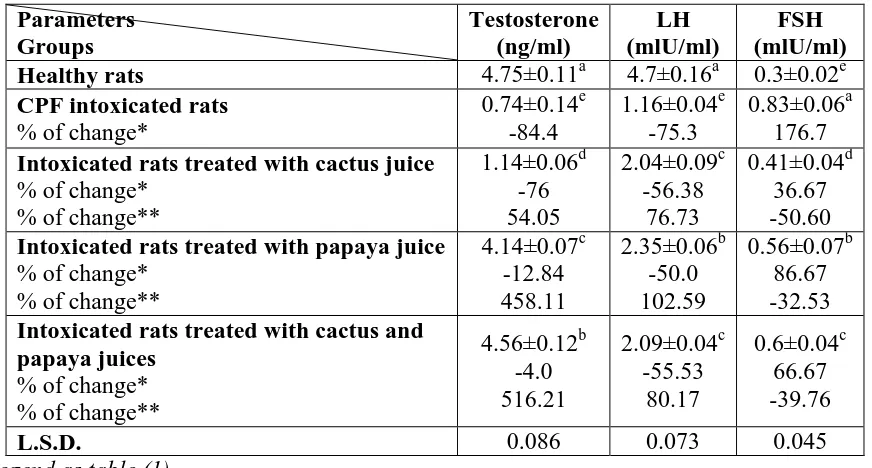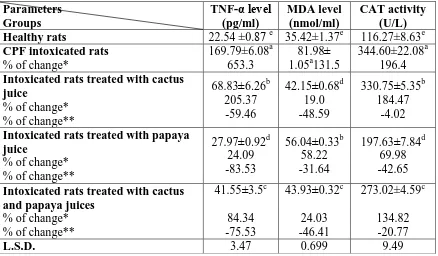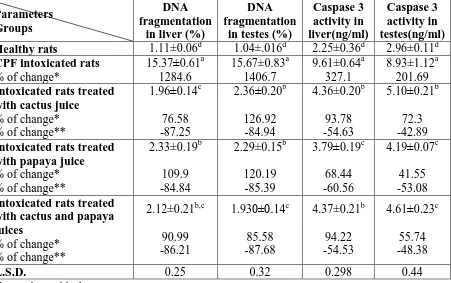PROTECTIVE EFFECTS OF CACTUS AND/OR PAPAYA JUICES AGAINST HEPATIC AND TESTICULAR TOXICITY INDUCED BY CHLORPYRIFOS IN ALBINO RATS
Full text
Figure




Related documents
The Group 1 (A) control, Group 5 and 6 (E and F) DIM 10 mg/kg b.wt and DIM@CS-NP 0.5mg/kg b.wt alone treated rats showing normal ductal epithelial architecture of the
This study examined the associations of objectively assessed sedentary behavior (SB) and physical activity (PA) with health-related quality of life (HRQOL) in older Japanese
The purpose of the present study was to evaluate the effects of the Handwriting Without Tear s® program on teaching a five year-old how to write his first name using proper
Daily egg consumption in hyperlipidemic adults - Effects on endothelial function and cardiovascular risk.. Valentine Njike 1 , Zubaida Faridi 1 , Suparna Dutta 3 , Anjelica
In the pre-ACCESS group, five out of 9 patients undergoing inpatient colonoscopy (56%) were discharged and underwent surgery during a separate admission: three patients were
The first 3 months of the year (the part of the data not used for training) were uses as test period. The outputs of the simulation model and the surrogate model were compared with
These results indicate that all three environmental variables are taken into account when deciding to rent an apartment from the profit sector while in the non-profit sector the
The intention object of the present work was to assess the lead biosorption by one blue-green algal taxon ( Chroococcus minutus ), and one green algal taxon